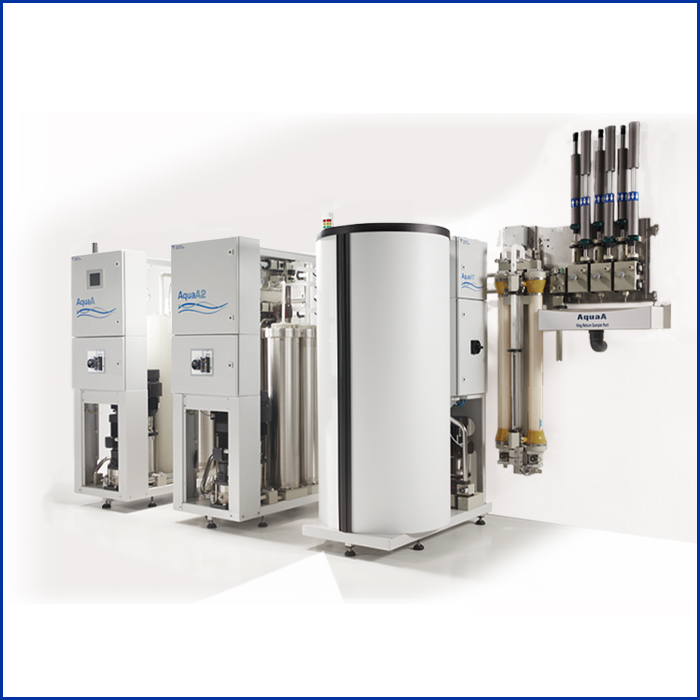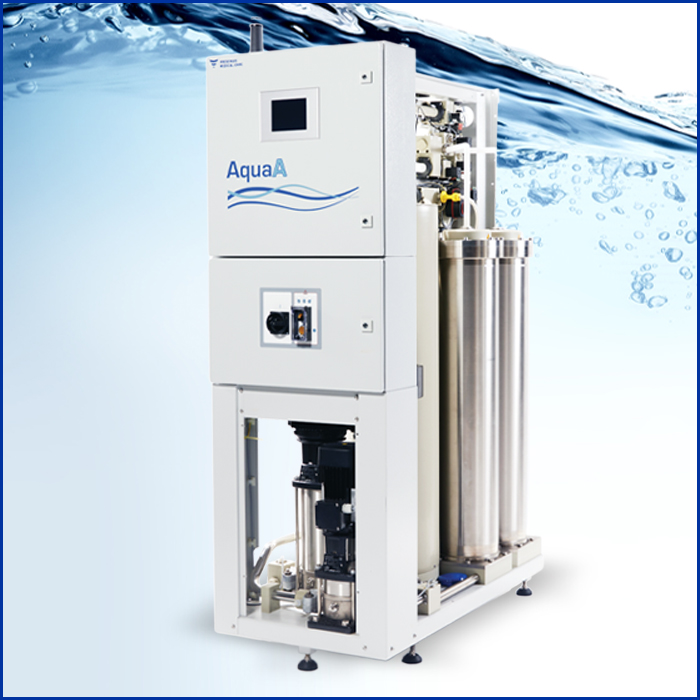Reducing Catheter Contact Time to Reduce Cost of Care | FMCNA
Improving vascular access and reducing catheter contact time not only improve the health and lives of patients, but also can save the healthcare system millions of dollars each year. However, achieving this important goal requires significant coordination among all stakeholders, as well as a focus on best practices, data-driven metrics, and transformative technologies. Azura Vascular Care's free-standing access centers are modeling this comprehensive approach by providing patients with a "one-stop shop" for all their vascular needs. Pilot studies indicate that creating access and caring for patients in this ambulatory setting can reduce catheter exposure time by 29 percent, and can lower infection rates, hospitalizations, and costs. As part of its commitment to innovation, Azura is also looking to utilize percutaneous fistula creation and, potentially, the HumacyteTM human acellular vessel—both of which hold promise for improving clinical outcomes.
Dialysis access type is among the most important determinants of the future health of the patient with end stage renal disease (ESRD). It is well known that hemodialysis catheters are fraught with deleterious sequelae that negatively impact the ESRD patient. Vascular access complications and higher prevalence of catheter contact time add up to poorer quality of life, higher mortality rates, and higher cost of care. A recent study found that patients who initiate hemodialysis with an arteriovenous fistula (AVF) have a 35 percent lower mortality rate than those who initiate with a catheter.1 Another study identified that the annual cost of care for a patient initiating hemodialysis with a catheter was $36,180 higher than initiating it with an AVF.2 Every hour that a patient is not transitioned from a catheter significantly increases the risk of death to the patient and costs the healthcare system an additional $4—adding up to many millions of dollars over the course of a year.
Vascular access quality improvement is a complex process requiring the coordinated effort of all stakeholders in order to reduce catheter contact time. Catheter avoidance now requires an understanding of new technologies like percutaneous fistula creation, the HumacyteTM human acellular vessel (HAV) for dialysis access, early cannulation grafts, and percutaneous placement of peritoneal dialysis (PD) catheters to facilitate urgent start PD. Additionally, existing technologies have improved to facilitate access salvage and sustainability with procedures such as fistula thrombectomy, treatment of high flow fistulae and steal, and treatment of central venous occlusions.
Avoiding the use of catheters and timely catheter removal are more important than whether a particular access modality might be considered a "gold standard." Instead, each patient represents a unique and complex clinical state and therefore requires a thoughtful plan tailored to their specific needs.
CATHETER REDUCTION STRATEGIES
- Use of early stick grafts
- HumacyteTM human acellular vessel
- Percutaneous access creation
- Percutaneous PD catheter placement to facilitate urgent start PD
- One-stop shop for vascular access placement and management
ACCESS SALVAGE PROCEDURES
- Fistula thrombectomy
- Sharp needle recanalization
- Superficialization
- Aneurysm reduction
- Infection excisions
- Treatment of central vein occlusion
- Resistant, symptomatic breast swelling treated with embolization
LONG-TERM ACCESS MAINTENANCE
- Treatments for steal syndrome
- Heart failure and high flow access
- Use of covered stents
- Management of cardiac rhythm devices
- Management of the "out of access" patient
- Access and kidney transplant patients
Currently accepted vascular access quality measures lack sufficient sensitivity and specificity to contribute meaningfully to improving vascular access outcomes. As part of the Centers for Medicare and Medicaid Services (CMS) quality initiative, the 5-star rating system directly addresses the percent of patients with an AVF and those with a central venous catheter (CVC) for greater than 90 days. While these are important measures and relatively easy to track, they do not provide direction for catheter elimination or for the rapid creation of the ideal access for an individual patient.
Azura proposes a comprehensive quality improvement program using the following nine touch points (Figure 1).
FIGURE 1 | Touch points of vascular access quality improvement
Although three of the nine touch points are listed under the dialysis clinic, the success of the clinic's outcomes is directly related to the access management team's dedication to catheter reduction. Many of the catheter removal delays can be eliminated by focusing on providing prompt service to reduce scheduling times. This focus on time metrics, coupled with promptly identifying access dysfunction prior to thrombosis through surveillance and monitoring, will pave the way for improving total catheter contact time and access vintage and reducing missed treatments. To ensure informed decisions and facilitate collaboration, the quality measures for vascular surgeons and access center interventionalists could be provided to dialysis centers and nephrologists.
ONE-STOP SHOP
Providing the ESRD patient with a "one-stop shop" for all their access needs (from creation to maintenance and salvage) allows for improved care coordination for timely catheter removal. Pilot studies performed in collaboration with Fresenius Kidney Care have shown that providing access creation in the access center setting can reduce catheter contact time by up to 29 percent.3,4 In addition, providing access care in a freestanding access center reduces infection rates, hospitalizations, and mortality, as well as the total cost of care.5 This is one of the leading reasons Azura is converting most of its access centers to Ambulatory Surgery Centers (ASC).
Incorporating vascular surgeons into Azura's ASC structure means the patient will navigate fewer providers and clinic locations to achieve timely catheter removal. The ASC model will also allow Azura to utilize two exciting and transformative technologies: percutaneous fistula creation and, potentially, the HumacyteTM human acellular vessel.
PERCUTANEOUS FISTULA CREATION
Percutaneous anastomosis devices were approved in June 2018 for use as an alternative to surgical fistula creation in the United States.6,7 Early studies suggest these percutaneous fistulas are comparable to surgically created fistulas on measures such as technical and clinical success; however, they may require maturation procedures. Additionally, the limited acceptable anatomical locations may preclude the use of this technique in many patients requiring an access.
Demonstrated advantages of endovascular fistula creation include the ability to perform AV access creation in an outpatient setting utilizing a minimally invasive technique, thus widening the group of physicians able to create functional AV fistulas. In addition, access creation in the vascular access center will improve access to care while reducing patient wait times.
These advantages may contribute significantly to patient satisfaction as well as increasing AVF prevalence and reducing CVC contact time for ESRD patients.
Seven Azura centers have been designated pilot sites for this exciting and important project. More than a half dozen physicians are currently being trained on the use of these devices. Between Azura centers in San Antonio, Texas, and Woodland Park, New Jersey, 50-plus successful percutaneous fistulas have already been placed. Furthermore, the transition to the ASC model will allow Azura interventional physicians and vascular surgeons to create fistulas on an outpatient basis.
HUMACYTETM HUMAN ACELLULAR VESSEL
Fresenius Medical Care North America (FMCNA) has partnered with HumacyteTM, the developers of the novel bioengineered human acellular vessel named Humacyl®. Humacyl® has been designated a biologic that offers off-the-shelf availability and, potentially, superior clinical efficacy and safety as compared with polytetrafluoroethylene grafts (pending the results of investigative trials), with the regenerative properties of a fistula. Humacyl® is grown in vitro from banked human aortic smooth muscle cells. These smooth muscle cells are placed on a tubular scaffold made of biodegradable material (Figure 2). Cells on the scaffold multiply, generating extracellular matrix proteins during the culture in a closed bioreactor system. Material from original donor cells that can trigger an immune response is then removed from the HAV matrix. The result is the Humacyl® human acellular vessel (Figure 3). Early patient data indicates that once implanted, the HAV is remodeled by the host patient to create a vascular structure similar to native vascular tissue.
FIGURE 2 | Grow in vitro to form a biologic 3D scaffold
FIGURE 3 | Humacyl® human acellular vessel (HAV)
Investigational studies have demonstrated that the Humacyl® can be cannulated four weeks after placement. With this early cannulation, CVC contact time can potentially be reduced—in turn, reducing complications of CVC, such as infection and central venous stenosis.8 Since the HAV is acellular and created from biologic human smooth muscle cells, Humacyl® is not immunogenic. This essentially eliminates the risk of rejection. In addition, Humacyl® has a decreased risk of infection, in comparison with traditional grafts, reducing the potential for catheter reinsertion.
ECONOMIC IMPACT OF CATHETERS
The economic impact of hemodialysis catheter use is considerable. In a study based on CMS data and hospital costs reported by the Kaiser Family Foundation and American Hospital Association, for "urgent start" hemodialysis patients (those requiring either temporary or tunneled hemodialysis catheters immediately and typically in a hospital-based setting), total inpatient and outpatient costs were $19,352 per patient for the first 90 days, plus an additional $8,053 per patient for the first 90 days of dialysis services.9,10 Considering 80 percent of the estimated 124,675 incident ESRD patients begin treatment with HD catheters, the cost impacts are truly staggering, at approximately $3.4 billion for the first 90 days and an additional estimated $800 million for dialysis services. When adding prevalent ESRD patients to these estimates, it becomes clear that HD catheter-based dialysis represents an unacceptably large percentage of the $114 billion annual Medicare ESRD/chronic kidney disease spending.11
Azura is committed to reducing this economic burden through a variety of pathways, including outpatient PD catheter placement, which is a more patient-centered, more comfortable, and more efficient way to begin dialysis. It also represents a significant cost savings, with potential decreased costs of approximately $3,000 per incident patient in the first 90 days and $200 per incident patient for dialysis services over the same period of time. Of course, this thought experiment assumes that all of the 80 percent incident ESRD patients beginning dialysis with a hemodialysis catheter change to PD. This assumption is somewhat unrealistic for a variety of medical, anatomic, and patient- and physician training-related reasons, but it still underscores the cost savings that may be recognized by Azura's determination to expand PD catheter placement options nationally.
To succeed at reducing catheter contact time, vascular access management requires coordinating multiple complex processes. These processes must be continually monitored and enhanced through data-driven analytics, best practices, and evidence-based quality improvement initiatives, thereby allowing all stakeholders to make informed decisions. Implementing the nine touch points of vascular access quality improvement, coupled with improved care coordination and adoption of new technologies in the "one-stop shop" ASC model, will help Azura achieve the vision of one access for a lifetime.
Meet Our Experts
MURAT SOR, MD
Chief Medical Officer, Azura Vascular Care
A graduate of the University of Pennsylvania, Murat Sor is certified by the American Board of Radiology, with subspecialty certification in interventional radiology. He is an assistant professor at Georgetown University Hospital's Interventional Radiology Fellowship program. Since 2015, he has served as the CMO of Azura Vascular Care and on the Fresenius Medical Care corporate medical advisory board. In addition, he is the medical director of HealthQare Associates, an Azura affiliated center, where he continues his clinical practice in interventional radiology.
NORMA J. OFSTHUN, PhD
Senior Vice President, Data Governance, Fresenius Medical Care
Norma Ofsthun leads FMCNA's data governance efforts and chairs the company's Data Governance Program. She has collaborated with numerous Fresenius physicians and outside collaborators on a variety of research publications in the renal field. Over the past 20 years, Norma's team has provided data and reports for key clinical initiatives such as the conversion from reuse to single-use dialyzers, the development of electronic algorithms for drug dosing, and the current AKI program. Norma holds her doctorate in chemical engineering from the Massachusetts Institute of Technology and holds numerous patents related to membrane-based medical devices.
References
- Malas MB, Canner JK, Hicks CW, et al. Trends in incident hemodialysis access and mortality. JAMA Surg 2015 May;150(5):441-48. doi:10.1001/jamasurg.2014.3484.
- Drew DA, Lok CE, Cohen JT, Wagner M, Tangri N, Weiner DE. Vascular access choice in incident hemodialysis patients: a decision analysis. J Am Soc Nephrol 2015 Jan;26(1):183-91. doi:10.1681/ASN.2013111236.
- Latif W, Horowitz I, Maddux D, et al. Vascular access time based process metrics as a novel identifier in the dialysis access care continuum. In Abstracts from the 2016 Vascular Access for Hemodialysis Symposium. Chicago, May 12-14, 2016. Abstract 1.1.3.2. http://www.vasamd.org/_resources/documents/events/2016Symposium/ VASA%20Symposium_ABSTRACTS.pdf.
- Latif W. Transitioning dialysis patients from catheter to permanent access. Nephrology News & Issues June 27, 2016. https://www.healio.com/nephrology/vascular-access/news/online/%7Beaf6df7a-1e5b-49d1-b0c1-07baccb1cf53%7D/ transitioning-dialysis-patients-from-catheter-to-permanent-access.
- Dobson A, El-Gamil AM, Shimer MT, et al. Clinical and economic value of performing dialysis vascular access procedures in a freestanding office-based center as compared with the hospital outpatient department among Medicare ESRD beneficiaries. Semin Dial 2013 Sep-Oct;26(5):624-32. doi:10.1111/sdi.12120.
- Hull JE, Elizondo-Riojas G, Bishop W, Voneida-Reyna YL. Thermal resistance anastomosis device for the percutaneous creation of arteriovenous fistulae for hemodialysis. J Vasc Interv Radiol 2017 Mar;28(3):380-87. doi:10.1016/j. jvir.2016.10.033.
- Rajan DK, Ebner A, Desai SB, Rios JM, Cohn WE. Percutaneous creation of an arteriovenous fistula for hemodialysis access. J Vasc Interv Radiol 2015 Apr;26(4):484-90. doi:10.1016/j.jvir.2014.12.018.
- Lawson JH, Glickman MH, Ilzecki M, et al. Bioengineered human acellular vessels for dialysis access in patients with end-stage renal disease: two phase 2 single-arm trials. Lancet 2016 May;387(10032):2026-34. doi:10.1016/S0140-6736(16)00557-2.
- Liu FX, Ghaffari A, Dhatt H, et.al. Economic evaluation of urgent-start peritoneal dialysis versus urgent-start hemodialysis in the United States. Medicine (Baltimore) 2014 Dec;93(28):e293.
- United States Renal Data System. 2018 USRDS annual data report: epidemiology of kidney disease in the United States. Bethesda, MD, National Institutes of Health, National Institute of Diabetes and Digestive and Kidney Diseases.
- Ibid.


